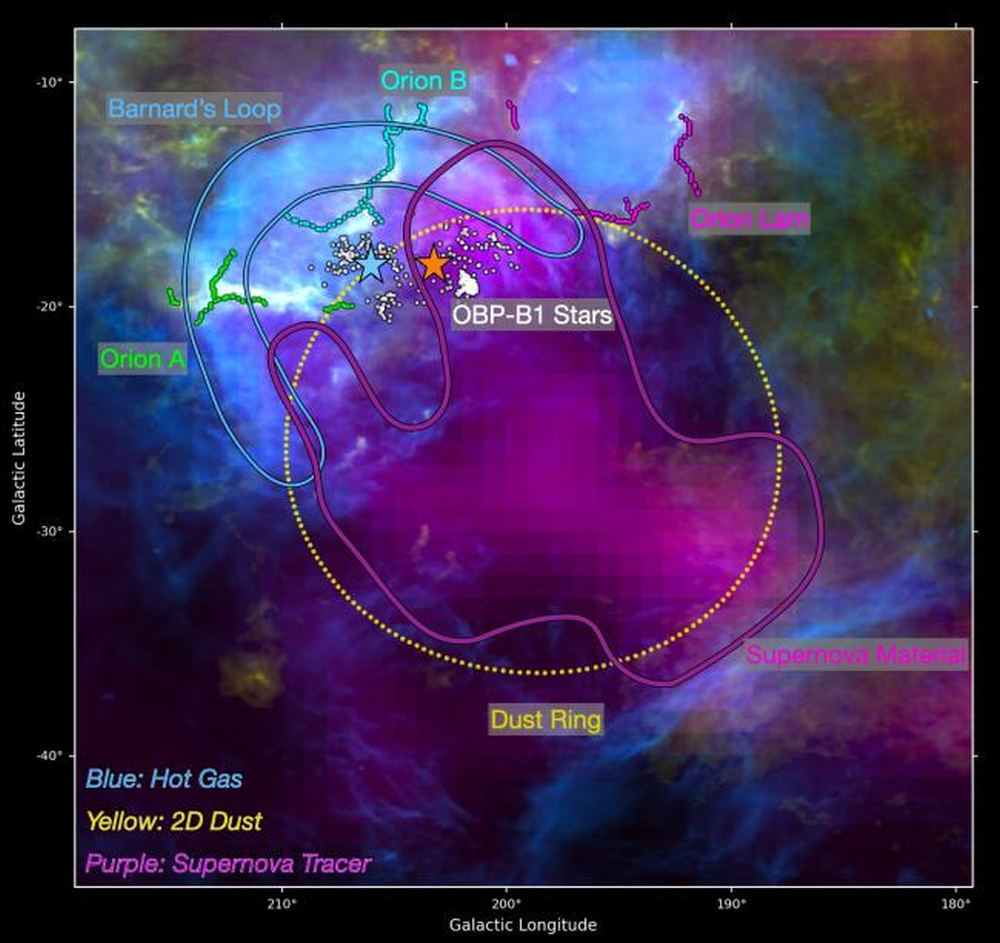The Orion Nebula is a well-known feature in the night sky and is visible in small backyard telescopes. Orion is a busy place. The region is known for active star formation and other phenomena. It’s one of the most scrutinized features in the sky, and astronomers have observed all kinds of activity there: planets forming in protoplanetary disks, stars beginning their lives of fusion inside collapsing molecular clouds, and the photoevaporative power of massive hot stars as they carve out openings in clouds of interstellar gas.
But supernova explosions are leaving their mark on the Orion Nebula too. New research says supernovae explosions in recent astronomical history are responsible for a mysterious feature first formally identified in the night sky at the end of the 19th century. It’s called Barnard’s Loop, and it’s a gigantic loop of hot gas as large as 300 light-years across.
Continue reading “Recent Supernovae Produced Giant Cavities in the Orion Nebula”
